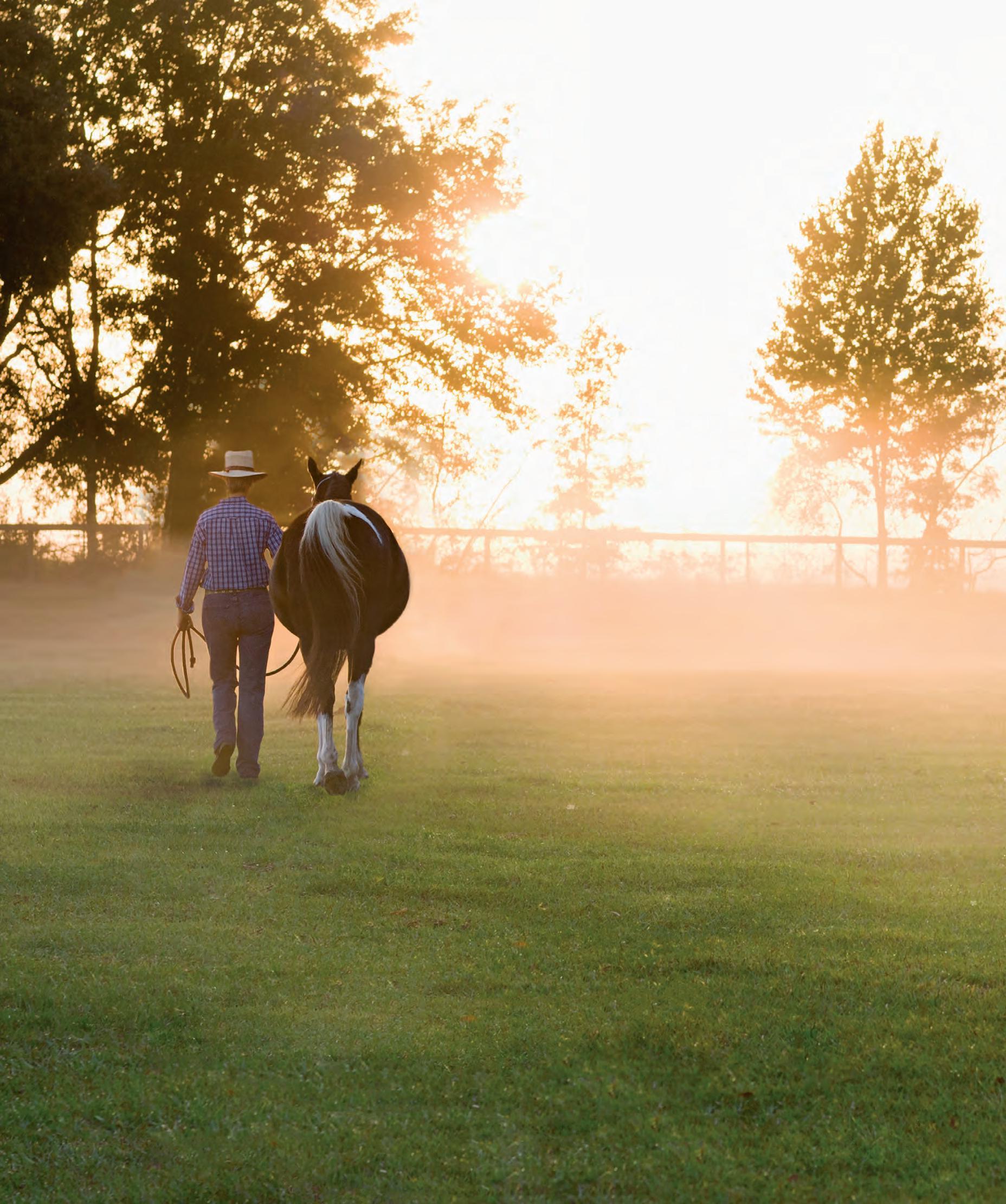
4 minute read
Steps to Take Before Buying Rural Property
A LITTLE PREPARATION GOES A LONG WAY IN A HOT MARKET.
STORY BY FARM CREDIT BANK OF TEXAS | FINDFARMCREDIT.COM
What do you get when you combine high demand and low interest rates? A Texas land rush, according to Farm Credit lenders. Families who felt cooped up during the COVID-19 pandemic are ready for more space. People moving to Texas from all over the country need a place to live.
And many see rural property as a stable investment that can provide income and enjoyment.
“When something hits the market, it's snagged right away,” says Sarah Franklin, branch manager at Texas Farm Credit’s Pleasanton branch, south of San Antonio. “We’re almost seeing bidding wars for rural homes and properties. Timing is certainly of the essence.”
In some areas, that’s leading to higher prices.
“People know interest rates are low and are willing to pay these market values,” says Travis Tekell, a loan officer in AgTexas Farm Credit Services’ Burleson branch, south of Fort Worth.
Things move quickly in a hot market, so make sure you’re ready when you find your dream property.
1. Research the market
Think about where you want to purchase rural property and how you intend to use it. Do you plan to buy or build a home? Are you looking for recreational or investment property? How close do you want to be to a city?
Get a sense of local prices by looking at websites that specialize in farm and ranch property. Compare asking prices with valuations on the county appraisal district’s website. And work with a good real estate agent and lender who understand rural property.
2. Check into infrastructure
Consider how you’ll use the property and what infrastructure you need. Is trash pickup, municipal water and sewer service available in the area? How about electricity, cellular service and highspeed internet? Is there legal access from a highway, county road or private easement?
The county, nearest city, your real estate agent and current service providers are all good resources.
3. Look for existing improvements
Things like barns, wells, septic systems, roads and a boundary fence add value and save you money down the line.
“As long as they’re in good condition, improvements are beneficial at homes, homesites, and property used for farming and ranching,” Franklin says.

4. Set a realistic budget
Know how much cash you’ll need to purchase, maintain and improve the property. If you’re getting financing, don’t forget the down payment—typically 20 percent for land purchases.
“A lot of people start by looking for property, and the banker wishes they would start with us,” Tekell says. “We can help them understand their plan, ask the right questions and determine their budget. Getting prequalified for a loan saves a lot of time once they do find property.”
5. Know codes and restrictions
Look into county laws, municipal zoning and deed restrictions that could limit how you use a property.
“Make sure there aren’t restrictions that keep you from carrying out your plans, like building a home or subdividing the property for your heirs,” Franklin says. “If it's close to a city or town, zoning might restrict the types of animals you could have.”
6. Know your surroundings
Check on current and proposed land use on neighboring tracts. Commercial development, intensive livestock operations, oil rigs or traffic noise could affect the property’s use, enjoyment and future sales potential.
“At the very least, I would get in the truck and go see the property rather than just look at an aerial shot,” Tekell says. “On a computer you just can't hear and see the things you can when you’re there.”
7. Maintain property tax advantages
A special-use valuation—commonly called an ag exemption—can reduce property taxes significantly. Many eligible properties already have one, but you’ll need to reapply after the purchase.
The county appraisal district will ask how you’re managing the land in order to qualify. One way is to keep a current tenant who leases the property for farming or ranching. You could also try your hand at growing hay, managing wildlife, harvesting timber or—if it’s 5–20 acres—keeping bees. And if you plan to buy or build a home, make sure your lender will let you keep the special-use valuation. That’s not a problem at Farm Credit.
8. Shop insurance rates
If you get financing, you’ll have to insure any structural improvements. Anything in a floodplain also requires flood insurance.
Franklin also encourages insurance for raw land and cash purchases. She recommends hazard insurance, rainfall and pasture insurance for drought-prone areas, and credit life insurance to cover loan debt.
“Life insurance isn’t easy to talk about, but we’ve seen that policy help families hold onto their property after someone passed away,” she says.
Most insurance agencies cover rural homes and outbuildings. Ask your lender and rural real estate agent where to find crop, livestock and pasture insurance.
9. Prepare for financing
Make sure you have a strong credit score, which helps you qualify for financing and faster loan programs. Turn in a loan application and a financial statement or tax returns. And if you’re forming a legal entity like a limited liability corporation or S corporation, have your documents ready well before closing.
“It's a much smoother, faster process if everything is ready at the same time you’re applying,” Tekell says.
10. Use local experts
Brokers and agents specializing in rural real estate are experts in their local markets. Local rural appraisers understand property’s value, flood risk, water access and much more. And local rural lenders like Farm Credit have loan products specifically for rural property owners.
“I recommend finding people you're comfortable with who will stick with you beyond that one transaction,” Franklin says. “I know I'm always happy to answer questions new property owners have, like who to contact about building a fence or drilling a water well. That’s where those ongoing relationships are important.”







